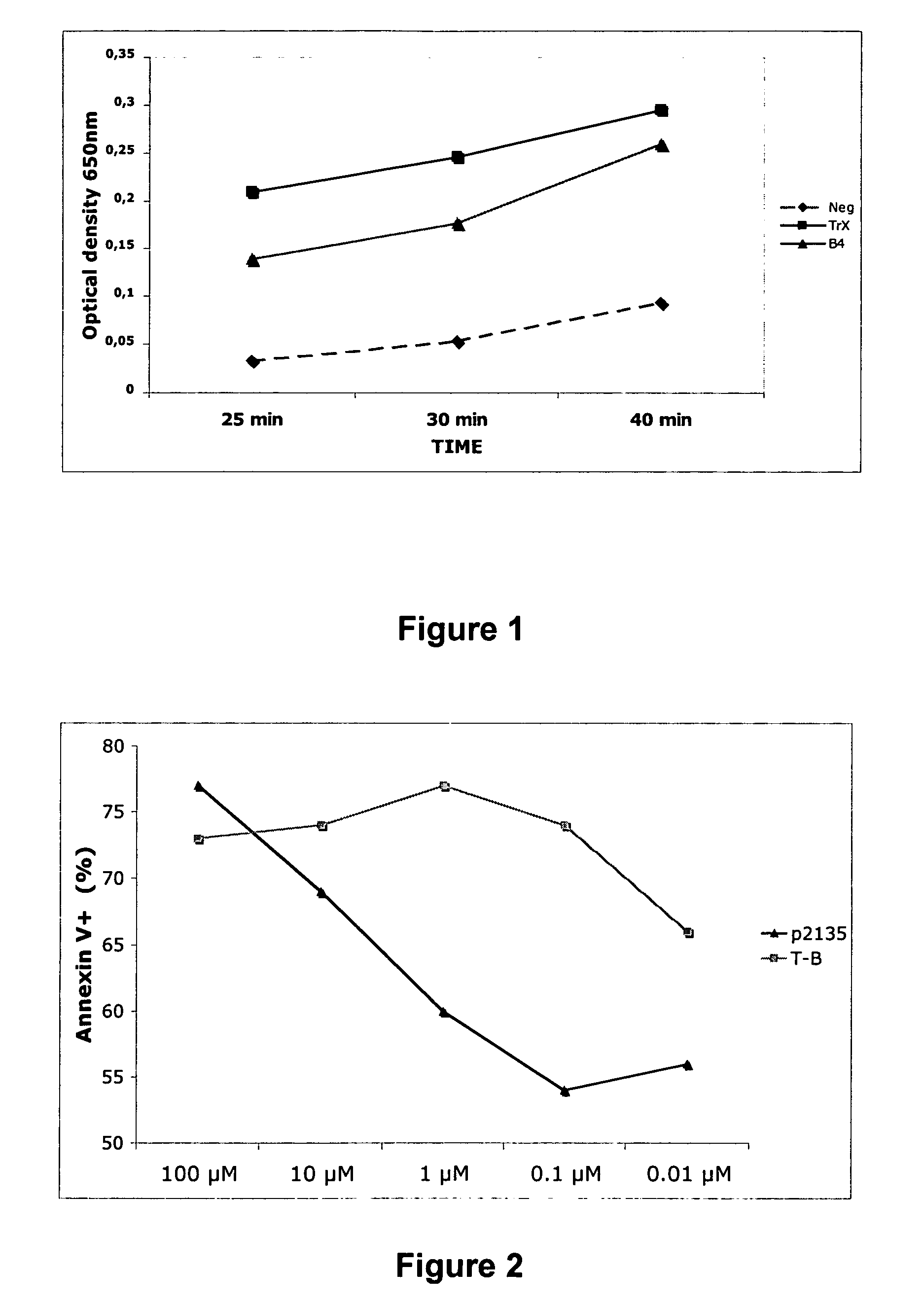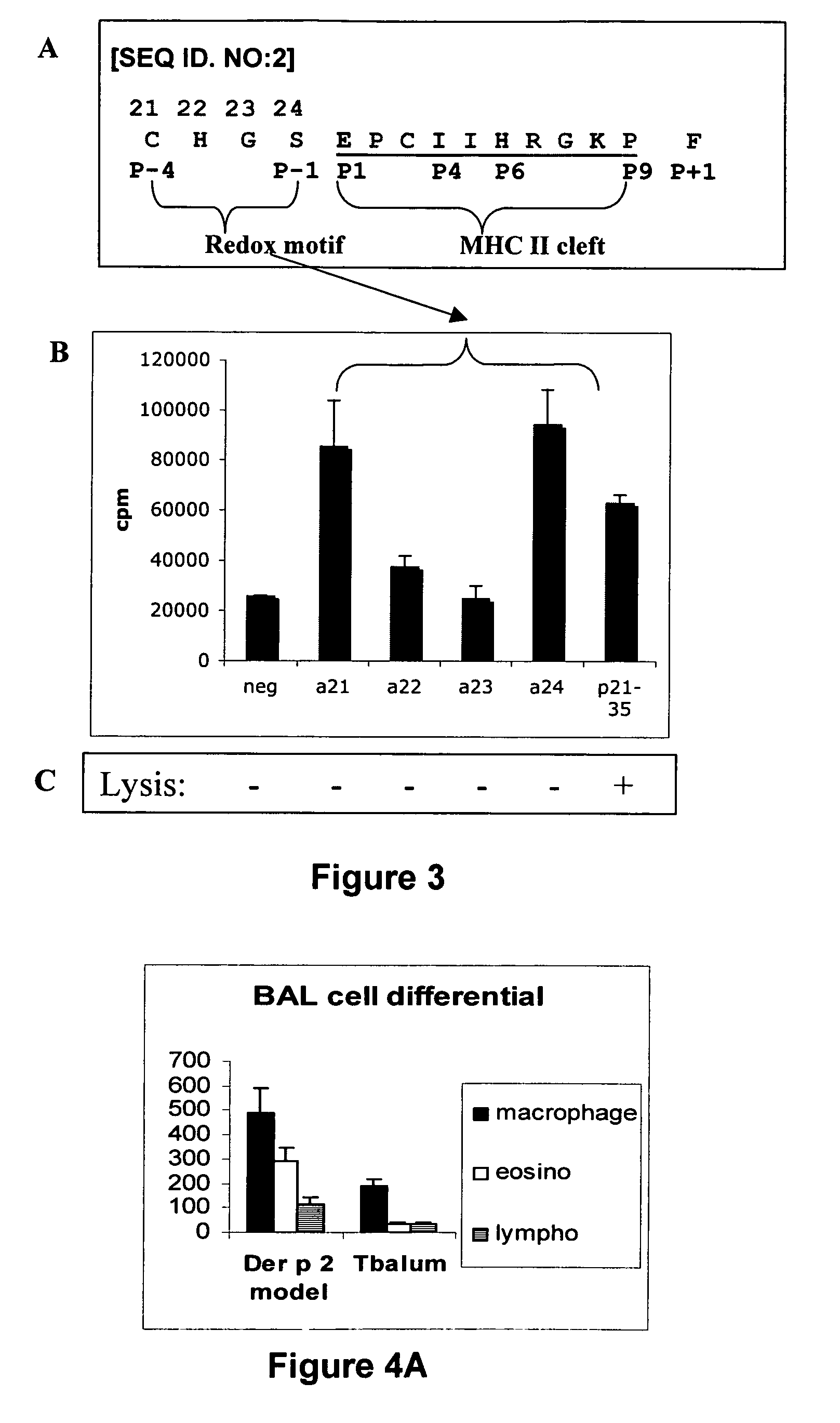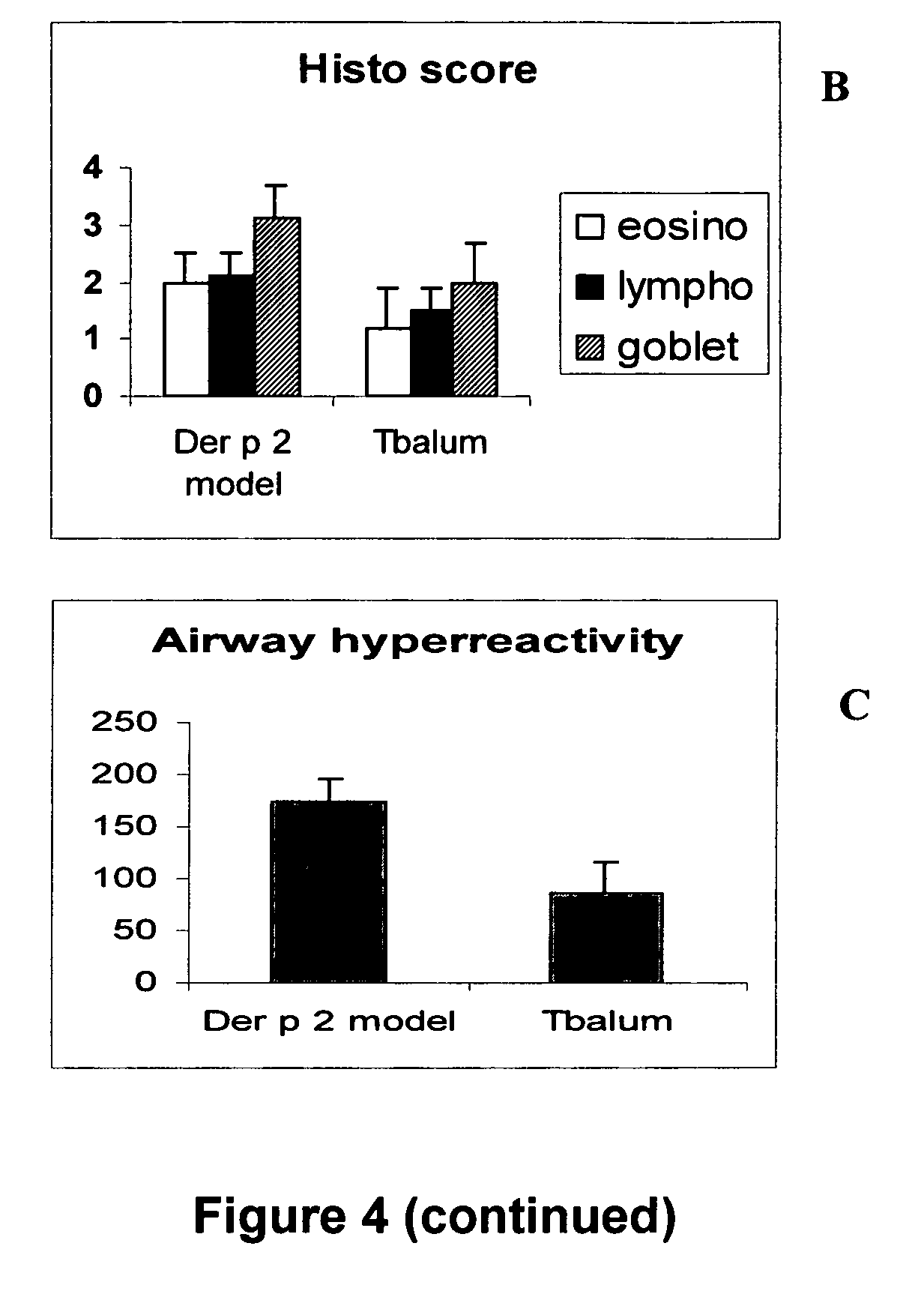Immunogenic peptides and their use in immune disorders
a technology of immune disorders and immunomodulatory peptides, applied in the field of immunomodulatory peptides, can solve the problems of no curative therapy, no curative therapy, and constant increase in the economic burden of allergic patients' care, so as to prevent auto-immune disease, and reduce the occurrence and/or severity of relaps
- Summary
- Abstract
- Description
- Claims
- Application Information
AI Technical Summary
Benefits of technology
Problems solved by technology
Method used
Image
Examples
example 1
P21-35 Contains a Thioredoxin / Glutaredoxin Consensus Sequence
[0236]Table 1 shows the amino acid sequence homology between a fragment of p21-35 and C—X(2)-S redox motifs in proteins from different organisms.
[0237]FIG. 1 shows the capacity of p21-35 to reduce disulfide bridges in the insulin reduction assay (turbidimetric assay). Herein, an insulin solution (1 mg / ml) containing DL-Dithiothreitol was incubated with a reducing protein or peptide or control for 20 minutes at 25° C. The increase in optical density at 650 nm (Y axis) due to precipitation of reduced insulin at pH 7 was then measured at different time points (X axis). A recombinant tetramer of p21-35 (B4) [SEQ ID. NO: 4] was used with recombinant thioredoxin as positive control.
example 2
Uptake of p21-35 by Antigen-Presenting Cells is Increased by Addition of a Subdominant T Cell Epitope (FIG. 2)
[0238]Induction of apoptosis of WEHI B cells was used as a measure of antigen uptake and presentation. WEHI B cells (2×104) where mixed with a peptide p21-35 specific Treg clone (ratio 1 / 1) and decreasing concentrations of peptide p21-35 (X axis), or the same peptide linked to a minor T epitope from tetanus toxin (p830-844; T-B). After 18 hours, cells were labelled with anti-CD19-PE antibodies (a marker of WEHI cells) and Annexin V-FITC, an apoptosis marker. Samples were then analysed by flow cytometry. Results are representative of the proportion of WEHI cells positive for Annexin V. A 100-fold increase in the capacity to induce apoptosis was observed when peptide p21-35 was linked to a minor T cell epitope, as indicated in FIG. 2.
example 3
Amino Acid Residues Involved in the Thioredoxin-Like Consensus Sequence are Instrumental for Expression of Regulatory Properties
[0239]Panel A of FIG. 3 shows the location of the thioredoxin-like sequence motif within peptide p21-35. The CHGS [SEQ ID. NO: 3] sequence is adjacent to the MHC-class II binding cleft. Alanine substitution of residue 21C or residue S24 of the thioredoxin-like C—X(2)-S motif does not impair T cell epitope recognition as measured by the proliferation (3H-thymidine incorporation) of a Treg clone, is indicated in panel B of FIG. 3. Proliferation was carried out using 5×104 WEHI cells incubated for 1 h at 37° C. with 6 μM of peptide. The cells were then washed and co-cultured for 4 days with 5×104 T cells. 3H-thymidine was added 24 h before the end of the culture. Radioactivity was counted on cells adsorbed on fibre glass filters. Substitution of residues 21 and 24 abrogate the capacity of the Treg clone to lyse antigen-presenting cells in an apoptosis inductio...
PUM
| Property | Measurement | Unit |
|---|---|---|
| loss of weight | aaaaa | aaaaa |
| diameter | aaaaa | aaaaa |
| particle sizes | aaaaa | aaaaa |
Abstract
Description
Claims
Application Information
 Login to View More
Login to View More - R&D
- Intellectual Property
- Life Sciences
- Materials
- Tech Scout
- Unparalleled Data Quality
- Higher Quality Content
- 60% Fewer Hallucinations
Browse by: Latest US Patents, China's latest patents, Technical Efficacy Thesaurus, Application Domain, Technology Topic, Popular Technical Reports.
© 2025 PatSnap. All rights reserved.Legal|Privacy policy|Modern Slavery Act Transparency Statement|Sitemap|About US| Contact US: help@patsnap.com



